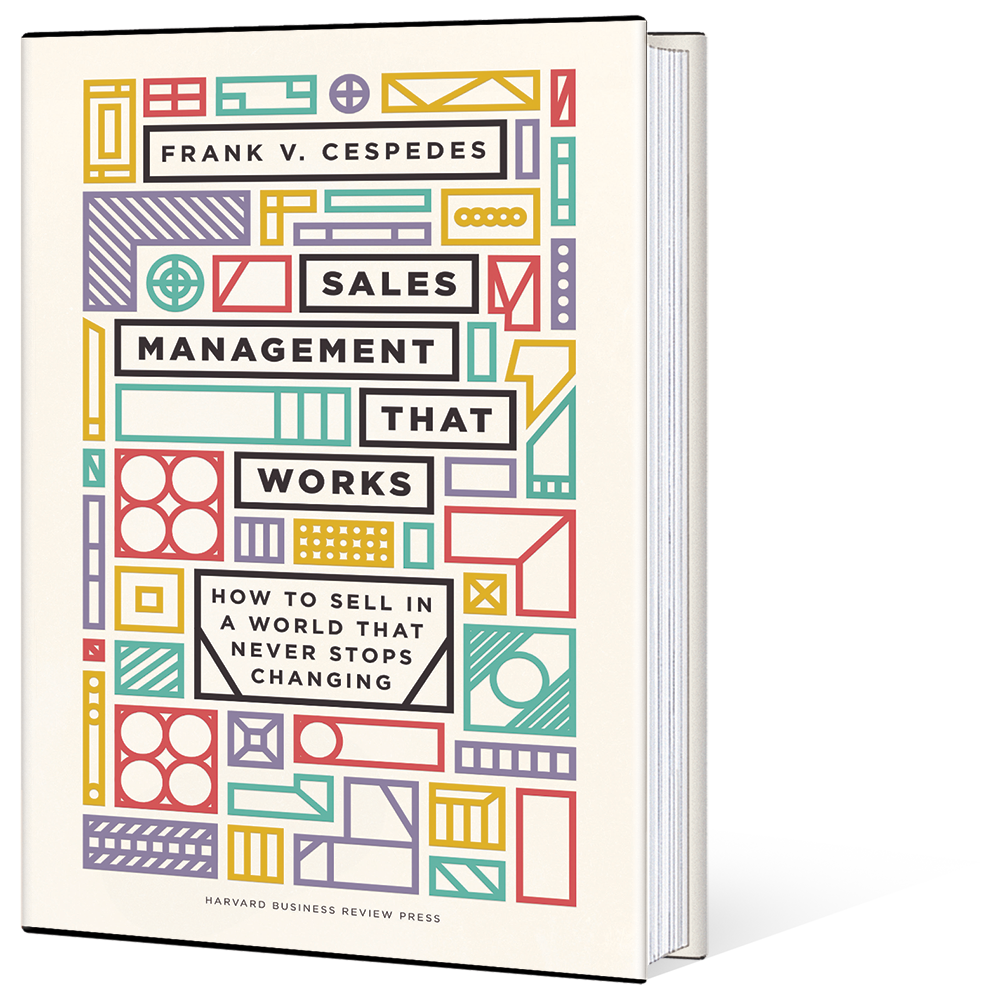Please note that this article first appeared in Top Sales Magazine July 2020 and is written by Frank Cespedes and David Hoffield.
Cascading bankruptcies, higher debt loads, and uncertainty about future waves of infection mean a tightening of budgets, resistance to change, and more situations where prospects prolong purchasing decisions until there’s more “certainty” about what truly is the new normal. Especially in B2B markets, buyers often have standard operating procedures in place and become accustomed to their current frame for evaluating vendors and value. If you do not alter that frame, the sale will fail.
Reframing occurs in sales conversations, and for sales leaders their biggest frustration is inconsistency. Most salespeople rely on adhoc experience or hope that something clever comes to mind when a situation arises. But there is a method that can be taught to improve close rates. It involves
four highly impactful frames: Positive Outcomes, Loss Aversion, Contrast, and Leverage Existing Beliefs. Here are some guidelines for utilizing the frames and better articulating value when facing buyer inertia.
Positive Outcomes and Loss Aversion: Contrary to what many salespeople are taught, reframing should not occur only at the end of a sales process when overcoming objections or negotiating price. In fact, the concluding stages of a sale are usually the worst time to try and reframe value. Prospects contemplate their doubts long before the “close” and, to avoid conflict, often cite a socially acceptable rationale such as price, which may not be the real reason. To acquire a customer, reframe throughout the sale because frames have a compounding effect depending upon when they are communicated.
For example, when first contacting prospects in the current environment, you must quickly generate interest by showing why they should consider making a change and why now. Harold Beck and Sons sells electric actuators for process control instrumentsa highinertia purchase decision because the actuator is embedded in the specifications and procedures for the instruments. When the Beck sales team contacts potential clients, they often encounter a response like, “We already have actuators that are good enough.” The Beck team reframes the prospect’s notion of desired outcomes by emphasizing the differentiators of Beck actuators: elimination of periodic maintenance, no torque switches and so no burnout motors. They also quantify the loss of time and money from actuator down time, maintenance cost, and unplanned component failures. Reframing in terms of Positive Outcomes and Loss Aversion enables many prospects to see their situation in a new light, which boosts their receptiveness to a conversation with Beck’s salespeople.
Contrast: Our brains are comparison machines. Without much conscious direction, people naturally compare a product’s price to what they’ve paid in the past for products in that category, independent of a new product’s possible benefits for workflow, injury reduction, or productivity.
Especially when budgets
constrict, reframing means establishing the comparison set. This is how
Healthcare Resource Group
(HRG), a company
that provides patient financial services to healthcare facilities,
justifies their solutions. When a hospital CFO expresses concern about the
unbudgeted operating expense of purchasing their
service, HRG reps are trained
to place it in the context of the additional
revenue the services
can generate for the
hospital. What was seen primarily as a budget busting operating cost often
becomes reframed as a
positiveROI capital investment decision.
Leverage Existing Beliefs: In sales, influence is bestowed by the buyer as well as earned by the seller. To win someone to your position, it’s often best to connect what you are recommending to their existing beliefs. Consider how an AdTech provider upsold a client who used them for brand safety and fraud, but a competitor for viewability.
The client said that it wanted “the best of both worlds.” The AdTech’s salesperson explained how the insights generated in the viewability function enhance brand safety and fraud protection yet, because the client was using the competitor, it was not able to maximize this protection. By leveraging the client’s existing beliefs, the salesperson enabled the client to perceive value in making a change. This kind of reframing is typically core to bundled sales opportunities in industries where supply chains now have more uncertainty and onestopshopping more salience in terms of risk reduction.
The economic fallout of the crisis will put more pressure on how your sales force frames the value you provide. How many in your current sales team have this ability? What are you doing to develop their ability? Are you devoting adequate time to educating your reps on the discussions they must have with accounts and how to reframe those discussions so they help clients accurately contemplate the key ideas upon which the sale should be built during and after the crisis?
Frank Cespedes is a Senior Lecturer at Harvard Business School and author of Aligning Strategy and Sales and Sales Management That Works: How to Sell in a World That Never Stops Changing (Harvard Business Review Press, forthcoming).
David Hoffeld is the author of The Science of Selling: Proven Strategies to Make Your Pitch, Influence
Decisions, and Close the Deal and the CEO
and chief sales trainer at Hoffeld Group, a researchbased sales training, coaching, and consulting firm.
Find out more here

